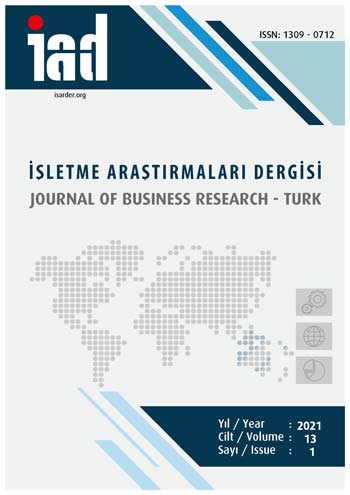Makroekonomik Göstergeler İle Döviz Kuru Arasındaki İlişkinin Analizi: (2005:01- 2019:10) Türkiye Uygulaması
Analyzing The Relationships Between Macroeconomic Indicators and Exchange Rate (2005:01-2019:10): Case Study of Turkey
Author(s): Mohammad Ayoob MakhdomSubject(s): Supranational / Global Economy, Economic policy, Financial Markets
Published by: İşletme Araştırmaları Dergisi
Keywords: Exchange Rate; Macroeconomic Indicators; ARDL Bound Test;
Summary/Abstract: Purpose – The purpose of this study is to predict either short and long run relationships between macroeconomic indicators and exchange rate the monthly data covering the period of (2005:01-2019:10) belongs to Turkey. At the same time, to effectively direct exchange rates it is necessary to determine the factors which impacts exchange rates as much as to be helpful to economic policy makers and supervisors to handle exchange rate under control in Turkey. Design/methodology/approach – To predicate the relationships between macroeconomic indicators and exchange rate time serious data is used. In the analysis, to determine the stationary of variables, unit root test is implemented. As a result of the unit root test, the series were stationary from different levels. In this case, ARDL bound test was carried out to determine the long and short run relationships between the variables. Findings – According to the results of ARDL bound test, it has been concluded that there is a cointegration relationship between macroeconomic indicators and exchange rate, in the long run, a positive relations found between exchange rate, interest and inflation rates, but a negative relations are found between exchange rate and unemployment, money supply (M1) and foreign trade balance. In the short run, a negative relation was found between the exchange rate and the foreign trade balance, but a positive relations were found between the exchange rate and all other variables included in the analysis. Also, the value of the error correction model is negative and statistically significant. Discussion – Nowadays, the exchange rate is one of the most discussed economic issues among the macroeconomic indicators in the world. According to the theories, it is emphasized that macroeconomic factors play an important role in determining exchange rates. In order to effectively direct exchange rates, it is important for economic policy makers and supervisors to determine the factors affecting exchange rates.
Journal: İşletme Araştırmaları Dergisi
- Issue Year: 13/2021
- Issue No: 1
- Page Range: 772-789
- Page Count: 18
- Language: Turkish

